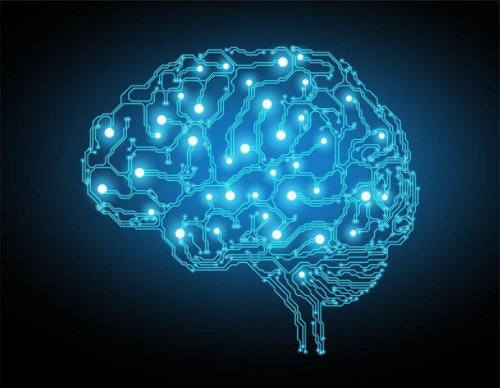Prescription Drug Abuse for Academic Performance

People use all kinds of prescription drugs nowadays. For example, taking a pain-reliever to avoid getting a headache is considered normal. One of the consequences of this is that prescription drug abuse is becoming more and more common.
These days, one of the big reasons why people use prescription drugs is to improve their intellectual performance. This problem has been going on since the 50s or 60s. However, it has worsened in the last ten years.
There’s even a Netflix documentary about it called Take Your Pills. In the documentary, we see that people are using prescription drugs to control ADHD symptoms and improve their academic performance. The documentary also discusses all the health dangers of prescription drugs.
In this article, we’ll discuss the implications of using drugs to improve academic performance. We’ll also talk about the possible negative mental and physical health consequences of this practice and reflect on the role of education systems in the diagnosis of learning disorders such as attention-deficit/ hyperactivity disorder (ADHD).
Misdiagnosis of ADHD
In the documentary Take Your Pills, you see the educational factors that have led many students to take drugs they don’t need. The main cause of this widespread prescription drug abuse is a massive misdiagnosis of ADHD. Most people know what ADHD is or have heard of it, which makes false diagnoses more likely. Since it’s a “popular” disorder, many health care professionals end up diagnosing patients that don’t actually have it.

The current educational model has led to more students displaying ADHD symptoms. Children and teens are overstimulated on a visual, auditory, and tactile level. They start playing with cell phones, tablets, and video games at a very young age.
When they start school, they find the conventional model excessively boring. In other words, their brains get used to functioning in highly volatile surroundings. Thus, it’s hard for them to stay quiet and attentive for hours while a teacher explains something to them.
In this context, a lot of children have a hard time paying attention and end up being diagnosed with ADHD. In reality, they’re just responding to an educational model that hasn’t adapted to the needs of digital natives. Our environment is incredibly dynamic, but the education system hasn’t changed in over a hundred years. Thus, it’s easy to understand why we’re overdiagnosing ADHD.
Work ethic and competitiveness in the educational environment
The sense of work ethic and competitiveness is another factor that can lead to prescription drug abuse. In this individualistic culture, it’s easy to get caught up in the need to win. If you’re struggling in school and have easy access to something that helps you concentrate, why not take it?
In other words, people who can’t get ahead or stand out often turn to psychostimulants to solve their problems. Schools evaluate all students in exactly the same way. Consequently, those with special needs are at a disadvantage due to this supposed evaluation and grading “equality”.
Prescription drug abuse is much more common in people who have a hard time in traditional school settings. It’s also hard for people who can’t dedicate themselves only to school due to family issues or financial responsibilities.
Positive effects of psychostimulants
Drugs to improve focus and academic performance prevent your neurons from recapturing dopamine and noradrenaline. Dopamine is responsible for things such as motivation and concentration, while noradrenaline increases your alertness and intellectual energy.
The most well-known psychostimulants are methylphenidate, atomoxetine, Adderall (brand name, very well known in the USA), and Concerta (brand name in Spain).
These drugs increase dopamine and cerebral noradrenaline levels in the brain (especially in the pre-frontal cortex). This makes you feel motivated, alert, focused, and more easily amused.
You should remember that all drugs can have unwanted side-effects. This is one of the reasons why prescription drug abuse can be so dangerous.

Cons of prescription drug abuse
Prescription drugs have many side effects, including tachycardia, insomnia, agitation, anxiety, and anorexia. What’s more, it’s easy to become dependent on all these drugs.
Lastly, it’s important to understand that people with ADHD do need medication. However, the drug won’t completely solve their problem. People with ADHD need learning tools and strategies. In most cases, medication should be part of the solution, not the solution in and of itself.
People use all kinds of prescription drugs nowadays. For example, taking a pain-reliever to avoid getting a headache is considered normal. One of the consequences of this is that prescription drug abuse is becoming more and more common.
These days, one of the big reasons why people use prescription drugs is to improve their intellectual performance. This problem has been going on since the 50s or 60s. However, it has worsened in the last ten years.
There’s even a Netflix documentary about it called Take Your Pills. In the documentary, we see that people are using prescription drugs to control ADHD symptoms and improve their academic performance. The documentary also discusses all the health dangers of prescription drugs.
In this article, we’ll discuss the implications of using drugs to improve academic performance. We’ll also talk about the possible negative mental and physical health consequences of this practice and reflect on the role of education systems in the diagnosis of learning disorders such as attention-deficit/ hyperactivity disorder (ADHD).
Misdiagnosis of ADHD
In the documentary Take Your Pills, you see the educational factors that have led many students to take drugs they don’t need. The main cause of this widespread prescription drug abuse is a massive misdiagnosis of ADHD. Most people know what ADHD is or have heard of it, which makes false diagnoses more likely. Since it’s a “popular” disorder, many health care professionals end up diagnosing patients that don’t actually have it.

The current educational model has led to more students displaying ADHD symptoms. Children and teens are overstimulated on a visual, auditory, and tactile level. They start playing with cell phones, tablets, and video games at a very young age.
When they start school, they find the conventional model excessively boring. In other words, their brains get used to functioning in highly volatile surroundings. Thus, it’s hard for them to stay quiet and attentive for hours while a teacher explains something to them.
In this context, a lot of children have a hard time paying attention and end up being diagnosed with ADHD. In reality, they’re just responding to an educational model that hasn’t adapted to the needs of digital natives. Our environment is incredibly dynamic, but the education system hasn’t changed in over a hundred years. Thus, it’s easy to understand why we’re overdiagnosing ADHD.
Work ethic and competitiveness in the educational environment
The sense of work ethic and competitiveness is another factor that can lead to prescription drug abuse. In this individualistic culture, it’s easy to get caught up in the need to win. If you’re struggling in school and have easy access to something that helps you concentrate, why not take it?
In other words, people who can’t get ahead or stand out often turn to psychostimulants to solve their problems. Schools evaluate all students in exactly the same way. Consequently, those with special needs are at a disadvantage due to this supposed evaluation and grading “equality”.
Prescription drug abuse is much more common in people who have a hard time in traditional school settings. It’s also hard for people who can’t dedicate themselves only to school due to family issues or financial responsibilities.
Positive effects of psychostimulants
Drugs to improve focus and academic performance prevent your neurons from recapturing dopamine and noradrenaline. Dopamine is responsible for things such as motivation and concentration, while noradrenaline increases your alertness and intellectual energy.
The most well-known psychostimulants are methylphenidate, atomoxetine, Adderall (brand name, very well known in the USA), and Concerta (brand name in Spain).
These drugs increase dopamine and cerebral noradrenaline levels in the brain (especially in the pre-frontal cortex). This makes you feel motivated, alert, focused, and more easily amused.
You should remember that all drugs can have unwanted side-effects. This is one of the reasons why prescription drug abuse can be so dangerous.

Cons of prescription drug abuse
Prescription drugs have many side effects, including tachycardia, insomnia, agitation, anxiety, and anorexia. What’s more, it’s easy to become dependent on all these drugs.
Lastly, it’s important to understand that people with ADHD do need medication. However, the drug won’t completely solve their problem. People with ADHD need learning tools and strategies. In most cases, medication should be part of the solution, not the solution in and of itself.
This text is provided for informational purposes only and does not replace consultation with a professional. If in doubt, consult your specialist.







